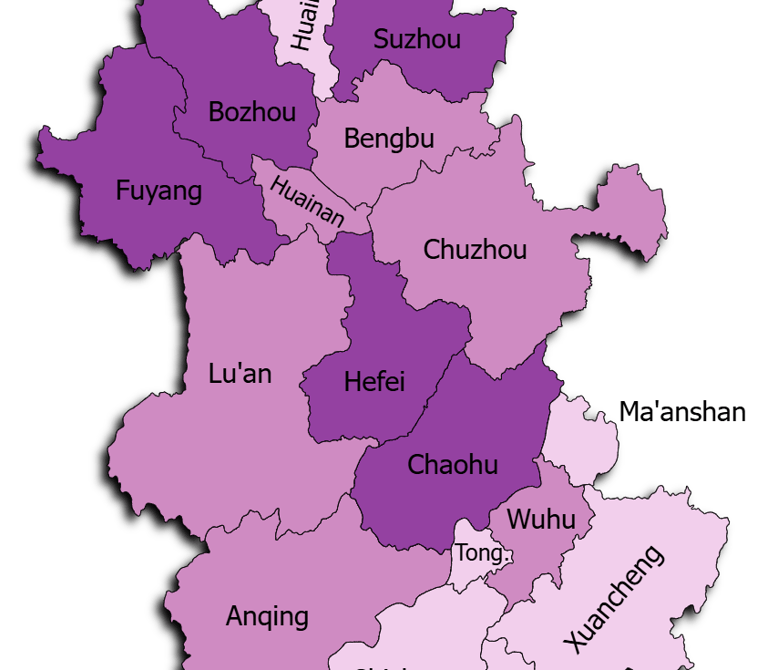Cities in Hainan


Introduction
Hainan is located in southern China and consists mainly of Hainan Island and nearby smaller islands. The region has a tropical climate with coastlines, rainforests, volcanic landforms, and rivers. It is known for its role as a growing economic zone, its natural landscapes, and its cultural links through trade and migration over centuries.


Haikou is located in the northern part of the island, along the coast. The city has a population of around 3 million and is approximately 280 km from Sanya. Haikou is known as the administrative and cultural center of Hainan, with a calm and coastal environment.
Haikou is known for its administrative significance, educational institutions, and cultural sites reflecting historical trade links. It is also home to Hainan University, an important academic center for the province. The city has preserved a number of historic areas showing architectural influence from trade networks across Southeast Asia.
In recent years, the city has expanded into sectors such as technology, tourism, and modern services, reflecting the province’s growing role in national development. Cultural heritage, museums, and historic ports make Haikou a key point of reference for understanding the region’s past and present.
📍 Main places to visit include Haikou Arcade Old Street, Hainan Museum, Haikou Volcano Cluster Global Geopark, Wugong Temple, Holiday Beach.
Haikou (海口)
Zunyi (遵义)
Zunyi is located in northern Guizhou, surrounded by hilly landscapes and river valleys. The population is about 7 million, and the city is around 150 km north of Guiyang. Zunyi is known for its role in modern Chinese history and its developed agricultural resources.
The city is recognized for the Zunyi Conference, an important moment in the history of the Communist Party of China. Zunyi is also known for producing tea, agricultural products, and light industry. Academic institutions such as Zunyi Medical University help support research and medical training in the region.
📍 Main places to visit include Zunyi Conference Site, Hailongtun Fortress, Chishui Danxia Park, Long March Memorial, Tashan Park.




Anshun is located in western Guizhou, about 90 km from Guiyang, with a population of around 2 million. The area is known for natural landscapes shaped by limestone formations and rivers.
Anshun has a long connection to karst landscapes, traditional handicrafts, and the culture of local ethnic minority groups. The city plays a key role in developing ecotourism, conservation, and cultural protection as part of the regional economy. It also has growing education and training centers connected to the tourism sector.
📍 Main places to visit include Huangguoshu Waterfall, Dragon Palace Cave, Tianlong Tunpu Ancient Town, Getu River Scenic Area, Guanling National Geopark.
Anshun (安顺)
Liupanshui (六盘水)
Liupanshui is located in western Guizhou and has a population close to 3 million. The area includes highland terrain and cooler temperatures.
Known for coal mining, transportation infrastructure, and natural plateau scenery, Liupanshui plays an important role in regional logistics. The city is also expanding tourism linked to mountain parks and preserved natural areas.
📍 Main places to visit include Yushe National Forest Park, Shuicheng Ancient Town, Meihuashan Scenic Area, Qinglong Cave.
Bijie (毕节)
Bijie is located in northwestern Guizhou on a mountainous plateau and has a population of around 6 million. It is about 180 km from Guiyang.
The city is known for agriculture, environmental restoration projects, and regional development programs. Bijie continues to expand its education system and research sectors to support sustainable growth.
📍 Main places to visit include Zhijin Cave, Caohai Lake, Hezhang Grassland, Baling River Bridge.




Kaili (凯里)
Kaili is located in southeastern Guizhou with valleys, rivers, and mountain areas. The population is around 0.5 million. It is roughly 130 km from Guiyang.
Kaili is recognized as a center of Miao and Dong minority culture, with well-preserved traditions in craftwork, silver decorations, and festivals. Cultural research and language development also play a role in local education programs.
📍 Main places to visit include Xijiang Qianhu Miao Village, Langde Miao Village, Kaili Museum, Leigongshan Mountain.
Tongren (铜仁)
Tongren is located in northeastern Guizhou near the border with Hunan, with a population of around 3 million.
The city is known for its ethnic culture, religious sites, and natural reserves. It has increasing research and education development linked to cultural studies and ecology.
📍 Main places to visit include Fanjing Mountain, Jiulong Cave, Shiqian Hot Springs.




Navigation
Main Menu
nathan.china-sphere.com
© 2025. All rights reserved.